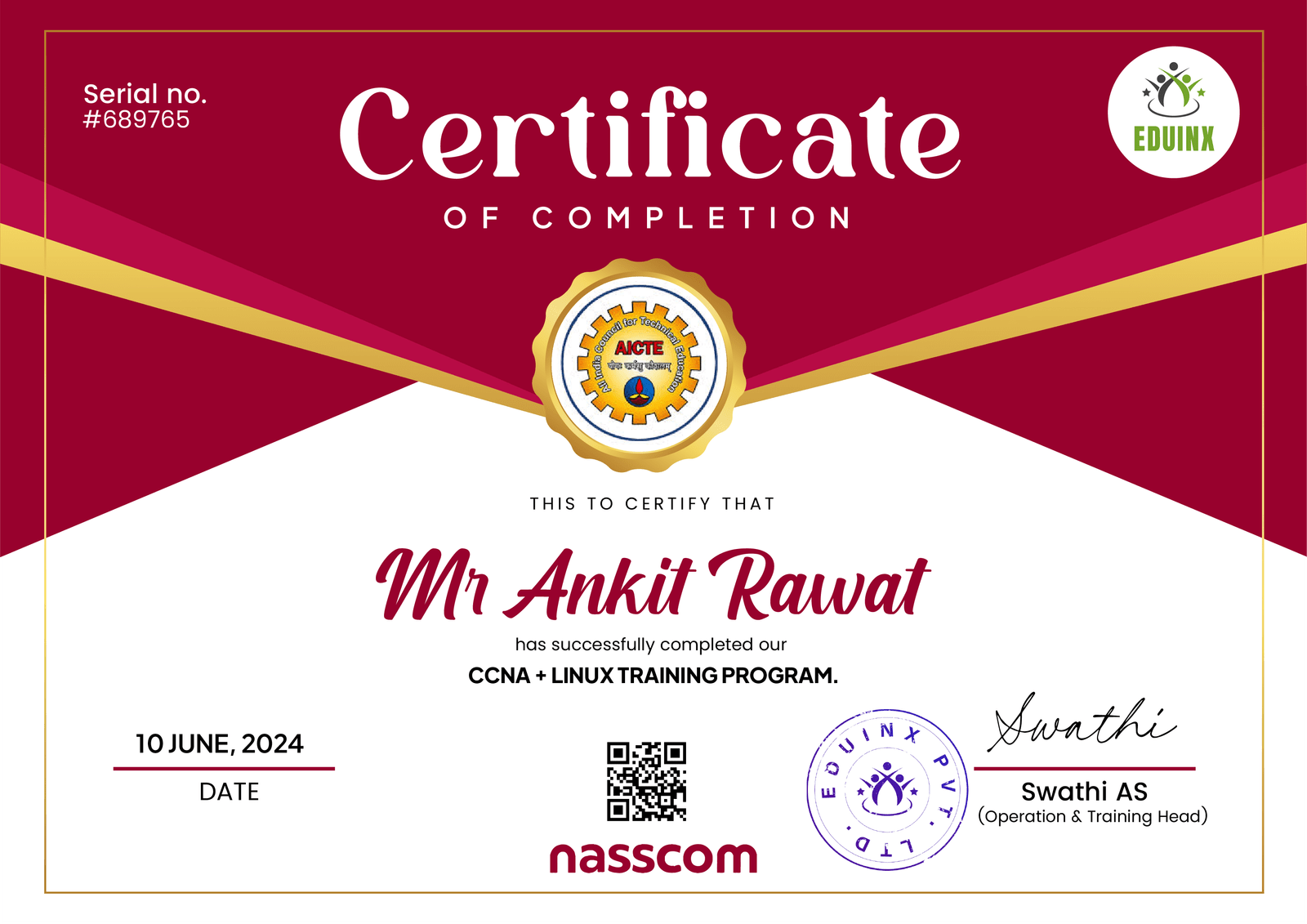Master the essentials, elevate your skills, and accelerate your career in just a few weeks!
Placement Assistance
Course Duration
Hiring Partners
Lab Access
Key Highlights


+18% GST

Cisco Certified Network Associate (CCNA) + LINUX
Upon successful completion of the CCNA + Linux Program, you will receive a prestigious certificate from Eduinx, validating your expertise in networking and Linux systems.